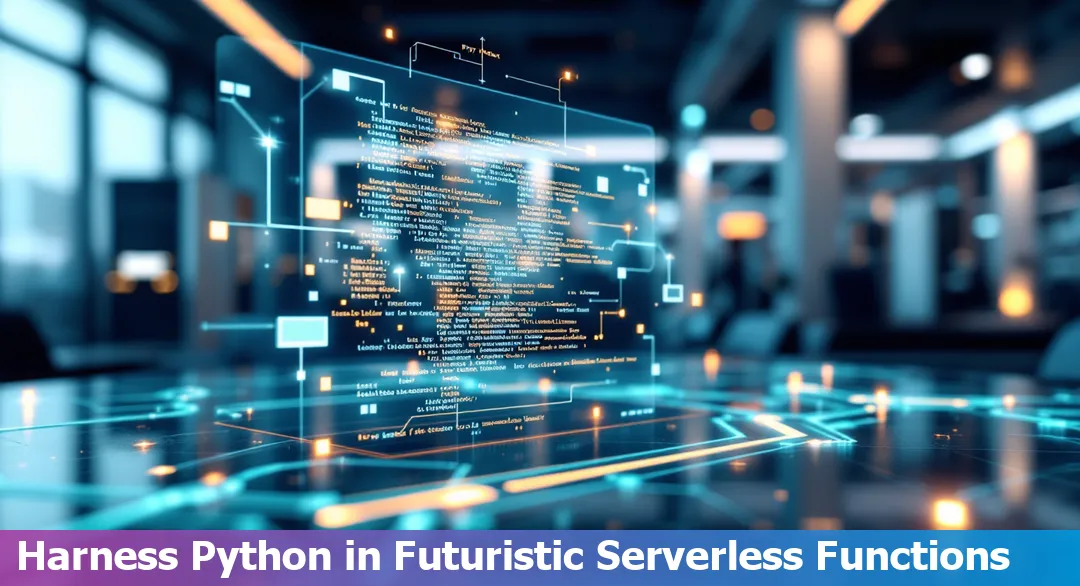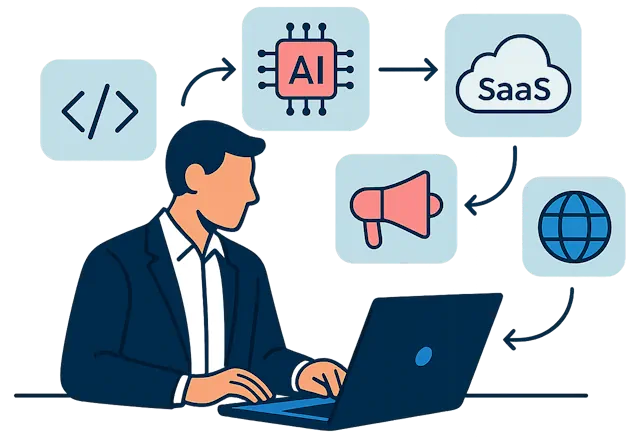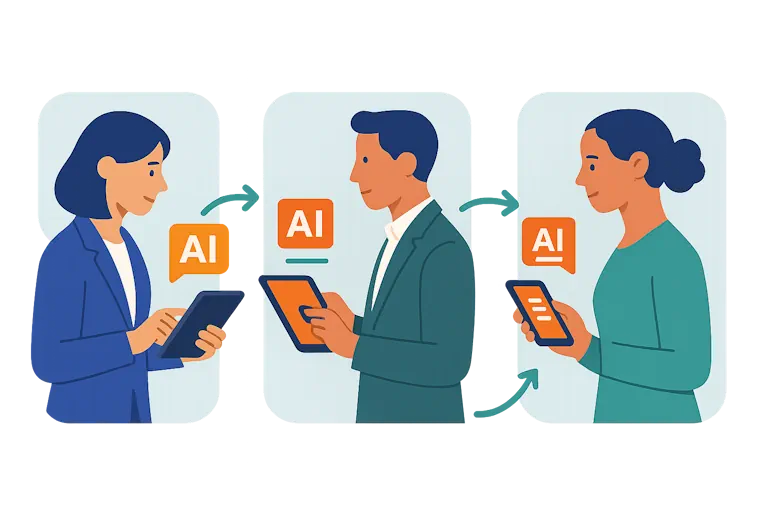Mastering Python in Serverless Functions in 2025: Use Cases and Best Practices
Last Updated: February 12th 2025

Too Long; Didn't Read:
In 2025, Python is pivotal in serverless computing, especially on AWS Lambda, which holds a 60% market share. Python enhances cloud efficiency with libraries like Paramiko and Scapy, supporting scalable APIs and microservices. By adopting best practices like memory optimization, companies can cut cloud costs by 23% and boost deployment speed by 45%. With tools improving debugging and monitoring, Python is revolutionizing serverless architecture by ensuring high availability and cost savings, transforming industries and making serverless development accessible to all.
In 2025, Python is absolutely crushing it in serverless computing, particularly with AWS Lambda leading the way as the go-to platform for cloud-based development.
The serverless computing scene is exploding with a 22.9% growth rate, and AWS Lambda's dominating 60% of global serverless workloads shows just how crucial it's become.
What makes Python stand out? It's super straightforward to use and can handle pretty much anything you throw at it. According to recent tech forecasts, Python's becoming even more powerful with its Paramiko, Cryptography, and Scapy libraries making systems ultra-secure.
Python's integration with modern tech stacks is getting better by the day, especially in AI and real-time processing. Whether you're building a basic API or creating complex machine learning models, Python's got your back with its massive library collection and active community support.
The pay-as-you-go model means you're only paying for what you actually use, which is perfect for keeping costs down while scaling up. Python can transform your serverless projects.
Let's dive into the specifics!
Table of Contents
- Key Use Cases for Python in AWS Lambda
- Best Practices for Implementing Python Serverless Functions
- Utilizing Python-Specific Tools for Serverless Success
- Addressing Challenges in Python Serverless Functions
- Conclusion: Embracing a Functionless Mindset
- Frequently Asked Questions
Find out the demand for skills in cloud computing and AI/ML as you plan your backend development career.
Key Use Cases for Python in AWS Lambda
(Up)In 2025, Python's role in serverless computing, especially within AWS Lambda, is transforming how developers tackle complex challenges. Real-time file processing stands out as a game-changing use case, where Lambda functions instantly process files upon upload to S3 buckets.
This capability is revolutionizing everything from image conversion to data validation, with companies reporting massive efficiency gains. The integration between Python, AWS S3, and DynamoDB makes handling large-scale data operations super straightforward, which is exactly what industries like finance and streaming services need.
The development of microservices architectures has gotten way easier with Python in Lambda.
Event handling in data pipelines shows how Python's adaptability helps create independent functions that work together seamlessly.
Companies using AWS Lambda are seeing incredible results - better scalability, faster deployment times, and serious cost savings on server maintenance. Python's awesome libraries just make everything click, especially when you're building complex systems that need to communicate effectively.
When it comes to building API backends, Python in Lambda is seriously impressive.
Packaging and deploying Lambda functions has become super efficient, letting developers create APIs that can handle tons of requests without breaking a sweat.
This setup is perfect for new companies that need to move fast and scale quickly. The combo of AWS API Gateway and Lambda creates this incredible serverless system that grows with your needs while keeping costs surprisingly low.
It's honestly amazing to see how Python makes all of this possible while keeping things simple and maintainable for developers like us.
Best Practices for Implementing Python Serverless Functions
(Up)When it comes to implementing Python serverless functions in 2025, following solid best practices can make a huge difference in your application's performance.
Breaking functions into smaller, single-purpose components is absolutely essential - it's not just about clean code, it's about making your serverless architecture work smarter.
The numbers don't lie: microservices architecture speeds up deployment by 45%, and when you're working with tight deadlines, that's a game-changer. Memory management is crucial too, especially in AWS Lambda.
By optimizing your memory settings based on actual function needs, you can slash cloud costs by 23% and make your functions respond 30% faster.
Security is seriously important.
Implementing proper documentation and clear security protocols is non-negotiable.
Recent data shows that more than half of serverless security breaches happen because of weak function-level security. The solution? Keep your functions focused and follow the principle of least privilege - basically, don't give your functions any more access than they absolutely need.
You'll also want to set up comprehensive logging because when something goes wrong (and trust me, something always does), you'll need those audit trails.
The key to success in serverless computing is staying organized and following these core practices.
Efficient memory allocation and well-structured function design aren't just best practices - they're essential for building reliable, scalable applications.
Remember to regularly test your functions, keep your dependencies minimal, and always think about optimization. When you combine these practices with consistent monitoring and improvement, you're setting yourself up for success in the serverless world.
Utilizing Python-Specific Tools for Serverless Success
(Up)In 2025, Python developers are completely changing the game with tools that make serverless development actually fun and straightforward. AWS Lambda Powertools has become the go-to toolkit for building reliable serverless applications, offering ready-to-use utilities that handle everything from logging to tracing.
The coolest part? It's super easy to get started - just add a layer to your Lambda function or grab it from PyPI, and you're set. What's really impressive is how AWS SAM (Serverless Application Model) lets us test everything locally before pushing to production.
No more crossing fingers hoping things work in the cloud!
These tools aren't just convenient - they're seriously transforming how we build serverless apps.
Powertools for Python comes packed with features like structured logging, metrics collection, and distributed tracing that used to take days to set up manually.
Plus, it's getting massive support from the developer community, with major companies like Capital One and CyberArk already using it in production. The best part is how it handles all the complex stuff behind the scenes, so we can focus on writing code that matters.
Whether you're building a simple API or a complex data processing pipeline, these tools make sure you're following best practices without having to overthink it.
What makes this really exciting is how it's changing the way we approach serverless development.
Instead of spending hours figuring out monitoring and debugging setups, we can use these tools to automatically handle all that boring stuff. Companies are seeing huge improvements in development speed and application reliability.
It's not just about writing code anymore - it's about building serverless applications that are ready for whatever comes their way, and these tools make that possible without the headache.
Addressing Challenges in Python Serverless Functions
(Up)Python serverless functions are facing some serious challenges in 2025, but we've got solutions that actually work. Cold starts are still an issue, hitting less than 1% of invocations but potentially affecting thousands of users when they do happen.
The good news? Cold start duration varies from under 100ms to about a second, depending on your setup. To tackle this, developers are getting creative with optimization strategies.
Smart language choices make a huge difference - Python and Node.js have faster cold starts compared to Java or .NET. If you're building something critical facing customers, use provisioned concurrency or implement strategic function warming.
Monitoring gets tricky when you're dealing with tons of distributed functions.
AWS CloudWatch and X-Ray are the go-to tools, but they're just the beginning. AWS Lambda's Python support now includes better runtime options and improved monitoring capabilities, making it easier to track performance and debug issues.
The latest Python runtimes (3.12 and up) even handle Unicode characters better in JSON responses, which is pretty sweet for international applications.
When it comes to costs, you've got to stay sharp.
The pay-per-use model sounds great until you realize your functions are running longer than needed or you're dealing with unexpected data transfer costs. The move to serverless in 2025 is all about finding that sweet spot between performance and cost.
It's seriously important to optimize your code, minimize dependencies, and use the right memory settings. Most developers I know are using a mix of native cloud provider tools and third-party solutions to keep their costs in check while maintaining solid performance.
Conclusion: Embracing a Functionless Mindset
(Up)In 2025, serverless computing is completely changing the game, and Python is leading the charge in this revolution. Serverless architecture lets developers focus purely on writing code without getting bogged down by server management.
The pay-as-you-go model is seriously catching on - it's not just about saving money anymore, it's about working smarter. What's really cool is how cloud infrastructure is evolving to handle everything from basic functions to complex AI workloads, making it super flexible for whatever you need to build.
Recent data shows that serverless computing cuts operational costs by up to 30% and delivers impressive 99.99% uptime - numbers that are hard to ignore.
The tech is getting more sophisticated by the day, especially with automated scaling capabilities that handle everything from 10 to 10 million users without breaking a sweat.
It's pretty amazing how the platform just knows when to scale up or down. We're seeing huge companies jump on board, and even small startups are building their entire infrastructure on serverless.
What makes it even better is how it works with edge computing to speed things up and make applications super responsive. The best part? You don't have to worry about the complex stuff happening behind the scenes - the cloud provider handles all that.
This is definitely the future of web development, and it's happening right now.
Frequently Asked Questions
(Up)Why is Python becoming more powerful in serverless functions in 2025?
In 2025, Python's power in serverless functions is attributed to its simplicity and ability to handle diverse tasks. With libraries like Paramiko, Cryptography, and Scapy, Python strengthens system security, and its integration with tech stacks for AI and real-time processing enhances its functionality.
What are the key use cases for Python in AWS Lambda?
Python in AWS Lambda is revolutionizing the processing of files upon upload to S3 buckets, facilitating tasks like image conversion and data validation. Its integration with AWS S3 and DynamoDB simplifies large-scale data operations, significantly benefiting industries such as finance and streaming services.
What are the best practices for implementing Python serverless functions?
Best practices include optimizing memory settings to reduce costs and enhance response times, thereby improving deployment speed by 45%. Security is crucial; utilizing the least privilege principle and comprehensive logging helps address potential breaches.
How can Python-specific tools aid in serverless development?
Python-specific tools simplify serverless development by providing utilities for logging and tracing, and enabling local testing before deployment. These tools make structured logging, metrics collection, and distributed tracing more accessible, enhancing development efficiency.
How can developers address challenges in Python serverless functions in 2025?
To address challenges like cold start issues and monitoring difficulties, developers can utilize provisioned concurrency and optimize functions. Improved runtime options with AWS CloudWatch and X-Ray, along with Python 3.12's enhancements, help in better monitoring and performance.
Dive into the role of Python in modernization as it simplifies the process of updating older backend codebases.
See how Async-first frameworks gaining popularity are shaping the future of backend development.
Unlock the potential of your applications with these Essential Optimization Techniques for Python in 2025.
Unlock the potential of advanced SQL join techniques to enhance your complex query capabilities.
The AI-driven alert evolution is set to transform how developers handle alert fatigue with more targeted and intelligent systems.
Gain valuable tips on selecting an orchestration tool that aligns with your company's specific needs.
Learn about the sophisticated Schema definitions in SQLAlchemy that set it apart as a powerful ORM tool.
Explore the significance of predictive monitoring advancements that are shaping the future of multi-cloud environments in DevOps.
Ludo Fourrage
Founder and CEO
Ludovic (Ludo) Fourrage is an education industry veteran, named in 2017 as a Learning Technology Leader by Training Magazine. Before founding Nucamp, Ludo spent 18 years at Microsoft where he led innovation in the learning space. As the Senior Director of Digital Learning at this same company, Ludo led the development of the first of its kind 'YouTube for the Enterprise'. More recently, he delivered one of the most successful Corporate MOOC programs in partnership with top business schools and consulting organizations, i.e. INSEAD, Wharton, London Business School, and Accenture, to name a few. With the belief that the right education for everyone is an achievable goal, Ludo leads the nucamp team in the quest to make quality education accessible


